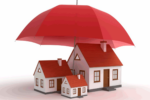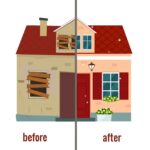Termite Awareness Week- March 10-16, 2024

Florida is home to over twenty different species of termites with the most damaging and common species are subterranean and drywood termites. These termites cause billions of dollars of damage annually in the United States and correct termite identification is pivotal to successful prevention, control, and protection of your home.
Subterranean termites live and invade from underground, and a single colony can cover one acre underneath
homes. They typically live in dark, moist, hidden environments underground but will create and live in carton
nests aboveground. These can be found in walls and attics of structures and in nearby trees. To move above the
ground, these termites build mud tubes on foundations, walls, and nearby trees. These mud tubes are a sign
of termite activity and used for detection.
Drywood termites live and forage in dry wood. There are many different species of drywood termites in Florida,
and these are located throughout the state. They enter structures through swarming from infested trees, stored
wood, or other structures near your home. Unlike subterranean termites, drywood termite colonies grow
slowly and thus do not cause as much damage as subterranean termites. A tell-tale sign of drywood termites are
sawdust-like piles near the infestation, these piles are hexagonal shaped pellets or waste of the termite.
Actions you can take to keep air home termite free are:
- Eliminate sources of standing water in or near the home.
- Be wary of areas in the home where wood is in contact with soil.
- Keep piles of lumber or firewood away from your home.
- Regularly inspect your deck, patio, or outdoor furniture for signs of damage.
- Remove decaying trees and branches from areas surrounding your yard.
- Use pine needles, pea gravel, rubber, or other non-organic material as mulch.
Part of your Inspections before purchasing a home should include Wood Destroying Organisms ( WDO) Inspection. Unlike most states, the Florida Department of Agriculture and Consumer Services (FDACS) requires the licensed WDO Inspector to report on Wood Destroying Organisms.
The Department of Agriculture and Consumer Services recommends that you hire a licensed pest control company for correct termite identification and protection for your home. You can find out if a company is licensed in Florida at: https://www.fdacs.gov/Business-Services/Pest-Control. For more info and tips: https://www.fdacs.gov/Consumer-Resources/Health-and-Safety/Protect-Your-Home-from-Pests/Termites.


















